March 2017
Rail News: Mechanical
Union Pacific aims to drive innovation by empowering employees to use idea-sharing software
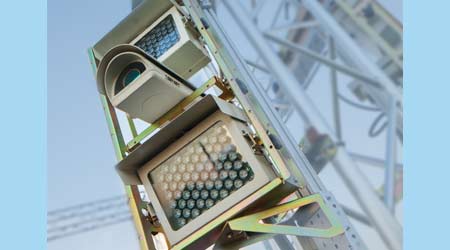
By Jeff Stagl, Managing Editor
An idea is a notion of a possible action or a conception of what ought to be. And it’s going to take a lot more ideas for Union Pacific Railroad to continue cultivating a culture that embraces and drives innovation.
The railroad is seeking better ways to perform routine tasks or employ recurring processes — efforts that can help boost efficiency, enhance safety, build business and cut costs, UP leaders believe.
Innovation is one of the railroad’s six “value tracks” that build on its core vision and mission; the other five are world-class safety, an excellent customer experience, resource productivity, a maximized franchise and an engaged team. When aligned, the tracks help create competitive advantages for customers, foster job stability and satisfaction for workers, and prompt solid returns for shareholders, UP leaders say.
Because of what’s become a top-to-bottom push, innovation now is evident throughout the organization, they say. And much of it was derived from workers’ ideas.
For example, the Class I in 2012 launched the UP Way, an initiative that encourages employees to conceive new ways to continuously improve safety, service and efficiency, such as by standardizing work processes. The initiative and similar efforts have helped the railroad institute small, incremental improvements (the Little I in furthering innovation). A Little I might be as uncomplicated as installing an air system at a yard to halve dwell time.
But the railroad also needs to initiate more large, game-changing improvements (known as the Big I) to register highly impactful results, says UP Senior Vice President of Supply Chain and Continuous Improvement Lynn Kelley.
“We have had pockets of innovation, like our long-rail initiative,” says Kelley, referring to a strategy implemented several years ago to import 480-foot sections of rail from Japan to form quarter-mile-long welded strings. “But we want systemic innovations. That’s the focus for us now.”
Enter Innovation Station, an electronic suggestion box of sorts slated to launch company-wide in May. The software application is designed to provide all employees a platform to share and vet ideas, from big to small and simple to complex.

For a company with more than 40,000 employees in 23 states, one of the biggest challenges is ensuring an idea is heard. The software will help empower employees to drive innovation and prompt results — the Big I variety included, UP leaders say.
The railroad can gain meaningful operational or organizational impacts from ideas that lead to both smaller and large-scale innovations, said UP Chairman, President and Chief Executive Officer Lance Fritz in an email. He cites Machine Vision — portals installed across track that can take 50,000 images per second and create 3D models to inspect a passing train — as a prime Big I example.
“Innovation is about working smarter with Big I and Little I approaches,” said Fritz.
A little learned along the ‘Way’
The UP Way has helped with regards to the Little I. Through the initiative, the railroad provides several methods and tools, including a “seek and solve” exercise. During an exercise, a cross-functional team spends two days engaging with subject matter experts, analyzing data and holding “go and see” sessions to solve a problem.
The UP Way led to hundreds of minor improvements last year. One grew from an inquisitive conductor and engineer, who questioned why an engine cut-out sign was positioned where it was on a mainline instead of being posted at a nearby crew change location. They believed it was inefficient for them to board the locomotive at the crew change location and then move the train 250 feet before cutting the engine by the sign because they were entering a new territory with both cab and wayside signals.
A UP Way team studied the situation and recommended the sign be repositioned to the crew change spot, which boosted velocity on the mainline by about 12 minutes per train.
In addition, a number of changes made in 2016 via the UP Way helped the railroad achieve its best-ever full-year recrew rate of 2.2 percent, down from 6 percent in 2015 and 9.2 percent in 2014, says Kelley. The rate reflects the percentage of trains that require additional crews to move them to final destination.
The “blocking and tackling” changes instituted by continuous-improvement teams included no longer terminating recrews at Lake Yard northwest of Albina, Ore., since recrew congestion was caused by several trains arriving there at the same time from different yards. In addition, a fueling stop was dropped to eliminate recrews between Salt Lake City and Yermo, Calif., and an air system was installed at a yard near Las Vegas to halve dwell time and phase out a recrew.
The railroad can continue to derive Big I results — such as the recrew rate record — by combining Little Is, says Kelley.
Stationary suggestion box
Since many Big Is often result from Little Is that are proposed and tested, then changed or improved, UP now is counting on Innovation Station to help generate a host of ideas. Developed by UP subsidiary PS Technology, the software platform will enable all employees to submit ideas confidentially.
Suggestions then will be reviewed by peers, who can comment and vote on them. Concepts that receive enough peer support will move through a process of research, validation and — for those that obtain corporate backing and funding — implementation.
Innovation Station was launched in 2010 in UP’s information technology (IT) department, a good place to learn what worked or didn’t work with the platform since the department is key to driving innovation, says UP SVP and Chief Information Officer Lynden Tennison.
“We’re kind of geeky about IT anyway,” he says.
Various obstacles and resistance can derail an idea, so UP needed a way to treat every suggestion as equal, with no pecking order or hierarchy of decision-making, says Tennison.
“We also wanted a way to generate ideas and initially filter them,” he says. “We make a minimal investment if an idea is accepted, and then if it really makes the light of day, we make a significant investment in it.”
Innovation Station in the IT department so far has generated 230 ideas, of which 80 received initial approval and one-third of those made it all the way to implementation, says Tennison. One that was implemented addressed an incorrect algorithm used in locomotive maintenance that unnecessarily drove up costs on such work.
“It was a little idea that was easy to implement, and created $10 million in savings,” says Tennison. “It makes you wonder if ideas like this would bubble up if there wasn’t a forum to do it?”
Platform boost
The same can be said of an idea proposed three years ago by System Engineer Steve Packwood to boost low battery voltage on locomotives to help prevent unexpected shutoffs. He developed a conditioner board — which resembles a circuit board in a personal computer (PC) — that could solve that problem.
Since electronic devices on locomotives tie into computer systems and eventually will connect with positive train control systems, they can be compromised power-wise if a locomotive engine is turned on and off numerous times in a short timeframe.
“It’s like your PC, you don’t want to turn it off and on a bunch of times,” says Packwood. “It comes down to the reliability of computer systems — that’s the biggest benefit [with the conditioner board].”
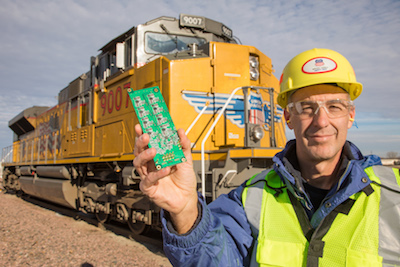
For about a decade, IT department workers were aware that locomotive battery voltage dipped at times and the problem needed to be solved, he says. About four years ago, a vendor introduced a chip that Packwood believed could be configured into a solution.
He developed a few early-design conditioner boards and posted the idea on Innovation Station three years ago.
“I thought: Why not just throw it in there? I got the advantage of some feedback, like if it could work in a different way or if there was a better idea out there,” says Packwood.
He received enough peer votes on Innovation Station to move to the next level, then eventually made the case for the board. Packwood spent several months developing prototypes and several more trying to figure out how to implement it.
Within two years, about 20 conditioner boards were being field tested. If one failed, Packwood worked with other employees to determine why. Currently, 200 of the boards are in the field.
“Now as they fail, we can make them more robust,” says Packwood. “We’re at the stage where we’ve done more testing and are ready to pull the trigger on it in a few months, if the decision is made [by the company] to spend money on it.”
Unlike the famous NASA saying, failure is an option when it comes to Innovation Station. UP hopes to test the waters on a litany of ideas, accepting that it’s likely a number of them will fail. If there’s a failure, it’s important to figure out how to address it and hold lessons-learned sessions, says SVP Kelley.
For now, UP is trying to complete four pre-launch pilot projects for Innovation Station that involve targeted campaigns in IT, company travel, and sales and marketing. Ideas were sought for 30 days, then employees who provided the chosen ones attempted to support a business case for their suggestion.
For example, the company was seeking ideas in IT as to how generate the best application development methods, says Tennison. In terms of travel, suggestions were solicited on ways to make it more efficient and cost-effective, and an easier process for employees, says Kelley.
UP plans to finish the pilot projects in May, then implement Innovation Station company-wide. Post-launch, ideas will continue to be sought through four to 12 targeted campaigns per year, says Tennison.
“If we keep it as an open platform, it atrophies over time and doesn’t stay top-of-mind anymore,” he says. “The targeted campaigns will keep it fresh, and we can point to the strategic areas we want to cover.”
Yea or nay?
There still are small Innovation Station details that UP hopes to work out through the pilot campaigns, such as if employees should use a thumbs up or thumbs down icon to vote on an idea.
“Is thumbs down a snub? It seems trivial, but we’re having discussions on that,” says Tennison.

In addition, it hasn’t yet been determined what rewards or recognition employees will receive for providing ideas that reach the proof-of-concept or implementation stage. There likely will be a chairman’s award for one or more of the most impactful ideas, says Tennison. In addition, senior executives might recognize honorees — officials at other companies with similar initiatives have said that their employees considered senior exec recognition a desirable reward, says Kelley.
While Innovation Station is being counted on as a critical resource for continuous and large-scale improvements, the railroad also is banking on it as an invaluable recruiting tool. UP is working to be considered a top tech company, among the ranks of Google and Apple.
Simulating and stimulating
So, creating an environment that nurtures ideas and world-class technology can be a huge competitive advantage, especially as the railroad seeks to recruit talent from the top 15 to 20 U.S. colleges, says Tennison.
“They want a relevant company with bleeding-edge technology,” he says of recruits. “We have gaming technology for training, such as locomotive simulator software that UP developed and implemented. So, we’re a company that can develop gaming technology.”
The railroad also is a company that soon will be much more open to suggestion, at least in an electronic sense.
The decision was made one-and-a-half years ago to roll out Innovation Station to every department to garner as many ideas as possible, and to drive as many positive results as feasible, says Tennison. Later this year, the initiative will be gauged to determine if it’s working as promised. Tennison is convinced Innovation Station will be quite the suggestion stimulator.
“It will be a catalyst to drive ideas throughout the organization,” he says.
Email questions or comments to jeff.stagl@tradepress.com.
Keywords
Browse articles on Union Pacific Railroad Innovation Station Machine Vision PS Technology information technology Big I Little I locomotives
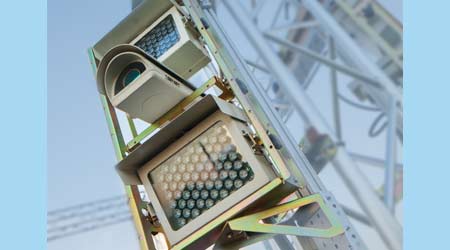
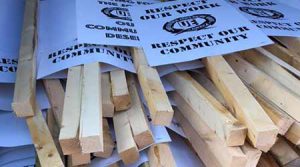
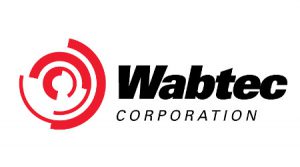
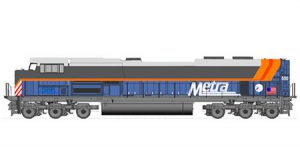

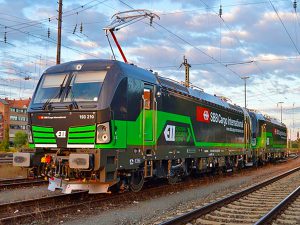
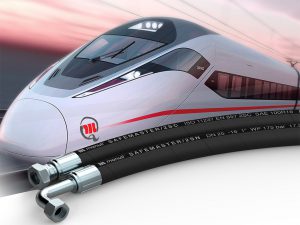


Be First to Comment